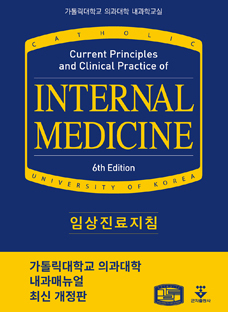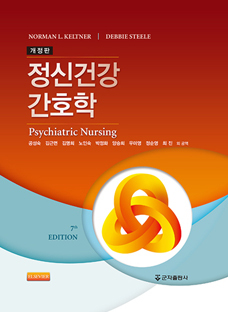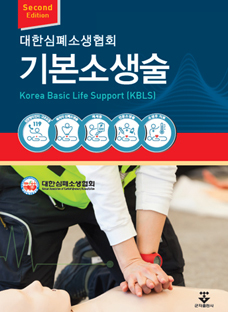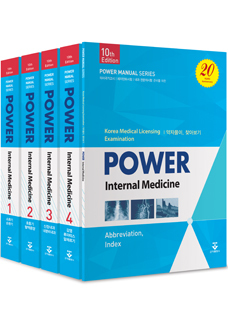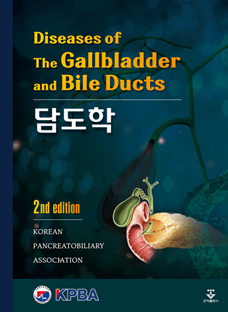Contents
Chapter 1: The Science
Carol B. Jaeger and Joy V. Browne
Introduction
History of Family-Centered Care
Evolution of the Science of Developmental Care
Sharing the Journey: Administration, Professional Staff, and Families on the Road Together
Gaps in Practice
Search for Evidence to Address Current Gaps
Infant and Family- Centered Developmental Care Considerations Addressed by the Panel
Concept Principles
Conceptual Model
Standards, Competencies, and Best Practices
Evidence- Based Practice Models
Conclusion
Chapter 1 Appendix
Chapter 2: The Infant and Family-Centered Developmental Care
Carol B. Jaeger and Joy V. Browne
Standards for Babies in Intensive Care and Their Families
Introduction
IFCDC Standards in Complex Adaptive Systems
IFCDC Standards for Positioning and Touch for the Newborn
IFCDC Standards of Sleep and Arousal Interventions for the Newborn
IFCDC Standards for Skin- to- Skin Contact With Intimate Family Members
IFCDC Standards for Reducing and Managing Pain and Stress in Newborns and Families
IFCDC Standards for Feeding, Eating, and Nutrition Delivery
Conclusion
Chapter 2 Appendix
Chapter 3: Theoretical Perspective for Developmentally Supportive Care
Heidelise Als
Introduction
Understanding Newborn Behavior
Research to Test the Efficacy of NIDCAP
NIDCAP Guidelines for Collaborative Care
System- Wide NIDCAP Implementation: NIDCAP Nursery Self- Assessment and NIDCAP Nursery Certification
Conclusion
Chapter 4: Quality Indicators for Developmental Care: A Trauma Informed Conceptual Model as an Exemplar for Change
Mary Coughlin, Tara DeWolfe, and Kristy Fuller
Introduction
What Is Trauma Informed Care?
The Core Measures of Trauma Informed Care
Recommendations for Practice, Education, and Research
Future Direction
Conclusion
Chapter 5: The Neonatal Intensive Care Unit Environment
Maryann Bozzette, Carole Kenner, Marina Boykova, Leslie B. Altimier, and Raylene M. Phillips
Introduction
Medical Advances
NICU Equipment
Primary and Iatrogenic Medical Complications
Infection Control
Environmental Concerns
Macroenvironment
Neonatal Integrative Developmental Care Model
Core Measure #1: Healing Environment
Core Measure #2: Partnering With Families
Core Measure #3: Positioning, Handling, and Caregiving
Core Measure #4: Safeguard Sleep
Core Measure #5: Minimizing Stress and Pain
Core Measure #6: Protecting Skin
Core Measure #7: Optimizing Nutrition
Palliative Care
Conclusion
Chapter 6: Single- Family Room Design in the Neonatal Intensive Care Unit
Leslie B. Altimier and Robert D. White
Introduction
Partnering With Families
Physical Environment
Key Attributes of a Collaborative Environment
NICU Recommended Design Standards
Single-Family Room
Space
Positive and Negative Impacts of NICU Room Types
Benefits of SFR Design
Negative Impacts of Open-Bay Environments
Noise
Additional Points to Consider for Noise Abatement in the NICU
Lighting
Fall Prevention
Staff
The NICU Design Process
Conclusion
Chapter 7: Infant Mental Health: Strategies for Optimal Social–Emotional
Jacqueline M. McGrath and Dorothy Vittner
Care of Infants and Families in the NICU
Introduction
Infant Mental Health Services: An Overview
Strategies That Promote Development of Healthy Parent–Child Relationships in the NICU
Integration of Relationship- Based Caregiving
Strategies That Prevent or Reduce Developmental and Social–Emotional Risk in the NICU
Working With Families With Preexisting Risk Factors
Situations Requiring Infant Mental Health Treatment
The Reflective Process
Conclusion
Chapter 8: Partnerships in Care: Mothers, Fathers, and Health Professionals
Marina Boykova and Carole Kenner
Introduction
Parenting in the NICU
Health Professionals as Partners
Strategies to Support Parents/Develop Partnerships in the NICU
Identification of Parents at Risk
Partnerships after NICU Discharge: Transition to Home
Partnership as a Model of Care
Conclusion
Chapter 9: Critical Periods of Development
Carole Kenner
Introduction
Weeks 1 to 8: Fertilization Through the Embryonic Stage
Development of the Placenta and Fetal Membranes . . . . . . . . . . . . . . . . . . . . . . . . . . . . . . . . . . . . . . . 152
Weeks 9 to 40: Fetal Development . . . . . . . . . . . . . . . . . . . . . . . . . . . . . . . . . . . . . . . . . . . . . . . . . . . . . . 159
Conclusion . . . . . . . . . . . . . . . . . . . . . . . . . . . . . . . . . . . . . . . . . . . . . . . . . . . . . . . . . . . . . . . . . . . . . . . . . . . 163
10
Factors Influencing Development ................................. 165
susan tucker blackburn
Introduction . . . . . . . . . . . . . . . . . . . . . . . . . . . . . . . . . . . . . . . . . . . . . . . . . . . . . . . . . . . . . . . . . . . . . . . . . . 165
Prenatal Factors Influencing Development . . . . . . . . . . . . . . . . . . . . . . . . . . . . . . . . . . . . . . . . . . . . . . . 165
Perinatal Factors Influencing Development . . . . . . . . . . . . . . . . . . . . . . . . . . . . . . . . . . . . . . . . . . . . . . . 173
Postnatal Influences on Development . . . . . . . . . . . . . . . . . . . . . . . . . . . . . . . . . . . . . . . . . . . . . . . . . . . 174
Conclusion . . . . . . . . . . . . . . . . . . . . . . . . . . . . . . . . . . . . . . . . . . . . . . . . . . . . . . . . . . . . . . . . . . . . . . . . . . . 177
11
Motor and Musculoskeletal Development of Neonates:
A Dynamic Continuum ........................................... 182
teresa Gutierrez and Jane K. sweeney
Introduction . . . . . . . . . . . . . . . . . . . . . . . . . . . . . . . . . . . . . . . . . . . . . . . . . . . . . . . . . . . . . . . . . . . . . . . . . . 182
Structural Development . . . . . . . . . . . . . . . . . . . . . . . . . . . . . . . . . . . . . . . . . . . . . . . . . . . . . . . . . . . . . . . 182
Prenatal Movement . . . . . . . . . . . . . . . . . . . . . . . . . . . . . . . . . . . . . . . . . . . . . . . . . . . . . . . . . . . . . . . . . . . 184
Development of Posture, Movement, and Tone . . . . . . . . . . . . . . . . . . . . . . . . . . . . . . . . . . . . . . . . . . . . 185
Clinical Implications for Neonatal Care . . . . . . . . . . . . . . . . . . . . . . . . . . . . . . . . . . . . . . . . . . . . . . . . . . . 186
Early Intervention and Interdisciplinary Follow- Up . . . . . . . . . . . . . . . . . . . . . . . . . . . . . . . . . . . . . . . . . 188
Conclusion . . . . . . . . . . . . . . . . . . . . . . . . . . . . . . . . . . . . . . . . . . . . . . . . . . . . . . . . . . . . . . . . . . . . . . . . . . . 190
12
The NICU Sensory Environment................................... 196
r oberta Pineda and Joan r. s mith
Introduction . . . . . . . . . . . . . . . . . . . . . . . . . . . . . . . . . . . . . . . . . . . . . . . . . . . . . . . . . . . . . . . . . . . . . . . . . . 196
The NICU Sensory Environment . . . . . . . . . . . . . . . . . . . . . . . . . . . . . . . . . . . . . . . . . . . . . . . . . . . . . . . . . 198Sensory Systems Overview . . . . . . . . . . . . . . . . . . . . . . . . . . . . . . . . . . . . . . . . . . . . . . . . . . . . . . . . . . . . . 198
Parents as an Integral Part of the NICU Sensory Environment . . . . . . . . . . . . . . . . . . . . . . . . . . . . . . 201
Timing of Parent Engagement With the Infant and Timing of Different Exposures . . . . . . . . . . . . . 201
Evidence and Support of Best- Practice Standards to Support the NICU Sensory Environment . . 201
Sensory Processing Support in the Transition to Home . . . . . . . . . . . . . . . . . . . . . . . . . . . . . . . . . . . 206
Conclusion . . . . . . . . . . . . . . . . . . . . . . . . . . . . . . . . . . . . . . . . . . . . . . . . . . . . . . . . . . . . . . . . . . . . . . . . . . 206
13
Infant Sleep and Arousal......................................... 213
amy L. salisbury and Kathleen s. s. Kolberg
Introduction . . . . . . . . . . . . . . . . . . . . . . . . . . . . . . . . . . . . . . . . . . . . . . . . . . . . . . . . . . . . . . . . . . . . . . . . . . 213
Sleep Development of Preterm and Term Babies . . . . . . . . . . . . . . . . . . . . . . . . . . . . . . . . . . . . . . . . . . 213
Sleep Concerns in the Hospitalized Infant . . . . . . . . . . . . . . . . . . . . . . . . . . . . . . . . . . . . . . . . . . . . . . . . 214
Safe Infant Sleep Environment . . . . . . . . . . . . . . . . . . . . . . . . . . . . . . . . . . . . . . . . . . . . . . . . . . . . . . . . . . 216
14
Collaborative Therapeutic Positioning: Multisystem and
Behavioral Implications.......................................... 231
Jane K. sweeney and Jan Mcelroy
Introduction . . . . . . . . . . . . . . . . . . . . . . . . . . . . . . . . . . . . . . . . . . . . . . . . . . . . . . . . . . . . . . . . . . . . . . . . . . 231
Neuromotor Considerations . . . . . . . . . . . . . . . . . . . . . . . . . . . . . . . . . . . . . . . . . . . . . . . . . . . . . . . . . . . . 231
Skin Considerations . . . . . . . . . . . . . . . . . . . . . . . . . . . . . . . . . . . . . . . . . . . . . . . . . . . . . . . . . . . . . . . . . . . 235
Respiratory Considerations . . . . . . . . . . . . . . . . . . . . . . . . . . . . . . . . . . . . . . . . . . . . . . . . . . . . . . . . . . . . . 235
Gastrointestinal Considerations . . . . . . . . . . . . . . . . . . . . . . . . . . . . . . . . . . . . . . . . . . . . . . . . . . . . . . . . . 236
Sleep and Comfort . . . . . . . . . . . . . . . . . . . . . . . . . . . . . . . . . . . . . . . . . . . . . . . . . . . . . . . . . . . . . . . . . . . . 237
Back to Sleep Considerations . . . . . . . . . . . . . . . . . . . . . . . . . . . . . . . . . . . . . . . . . . . . . . . . . . . . . . . . . . 238
Short- and Long- Term Neurobehavioral Effects . . . . . . . . . . . . . . . . . . . . . . . . . . . . . . . . . . . . . . . . . . 238
Human Touch . . . . . . . . . . . . . . . . . . . . . . . . . . . . . . . . . . . . . . . . . . . . . . . . . . . . . . . . . . . . . . . . . . . . . . . . . 239
Touch and Positional Support During Medical Procedures . . . . . . . . . . . . . . . . . . . . . . . . . . . . . . . . . 240
Neonatal Positioning Standards and Competencies . . . . . . . . . . . . . . . . . . . . . . . . . . . . . . . . . . . . . . 240
Conclusion . . . . . . . . . . . . . . . . . . . . . . . . . . . . . . . . . . . . . . . . . . . . . . . . . . . . . . . . . . . . . . . . . . . . . . . . . . . 245
15
Oral Feeding and the High- Risk Infant . . . . . . . . . . . . . . . . . . . . . . . . . . . . .252
Jacqueline M. McGrath, barbara Medoff- Cooper, ashley Darcy-Mahoney,
Kelly sharmane McGlothen-bell, and annalyn Velasquez
Introduction . . . . . . . . . . . . . . . . . . . . . . . . . . . . . . . . . . . . . . . . . . . . . . . . . . . . . . . . . . . . . . . . . . . . . . . . . . 252
Gastrointestinal Tract: Anatomic and Physiologic Limitations . . . . . . . . . . . . . . . . . . . . . . . . . . . . . . . 253
Enteral Feeding . . . . . . . . . . . . . . . . . . . . . . . . . . . . . . . . . . . . . . . . . . . . . . . . . . . . . . . . . . . . . . . . . . . . . . . 255
Breastfeeding . . . . . . . . . . . . . . . . . . . . . . . . . . . . . . . . . . . . . . . . . . . . . . . . . . . . . . . . . . . . . . . . . . . . . . . . 257
Breastfeeding in Other High- Risk NICU Populations . . . . . . . . . . . . . . . . . . . . . . . . . . . . . . . . . . . . . . 260
Myths About Breastfeeding in the NICU . . . . . . . . . . . . . . . . . . . . . . . . . . . . . . . . . . . . . . . . . . . . . . . . . . 261
Physiology and Development of Sucking and Swallowing . . . . . . . . . . . . . . . . . . . . . . . . . . . . . . . . . . 261
Anatomy of Oral Feeding . . . . . . . . . . . . . . . . . . . . . . . . . . . . . . . . . . . . . . . . . . . . . . . . . . . . . . . . . . . . . . . 262
Assessment of Feeding Readiness . . . . . . . . . . . . . . . . . . . . . . . . . . . . . . . . . . . . . . . . . . . . . . . . . . . . . . 267
Setting the Stage for First and Subsequent Feeding Success . . . . . . . . . . . . . . . . . . . . . . . . . . . . . . . 267
Psychosocial and Family Issues: Preparing for Discharge . . . . . . . . . . . . . . . . . . . . . . . . . . . . . . . . . . . 273
Future Research Implications . . . . . . . . . . . . . . . . . . . . . . . . . . . . . . . . . . . . . . . . . . . . . . . . . . . . . . . . . . . 275
Conclusion . . . . . . . . . . . . . . . . . . . . . . . . . . . . . . . . . . . . . . . . . . . . . . . . . . . . . . . . . . . . . . . . . . . . . . . . . . . 276
16
Skin- to- Skin Contact Optimizes Outcomes for Infants and Families ...284
Dorothy Vittner and Jacqueline M. McGrath
Introduction . . . . . . . . . . . . . . . . . . . . . . . . . . . . . . . . . . . . . . . . . . . . . . . . . . . . . . . . . . . . . . . . . . . . . . . . . 284
Benefits to Family (Maternal and Paternal) . . . . . . . . . . . . . . . . . . . . . . . . . . . . . . . . . . . . . . . . . . . . . . 285Benefits for Infants . . . . . . . . . . . . . . . . . . . . . . . . . . . . . . . . . . . . . . . . . . . . . . . . . . . . . . . . . . . . . . . . . . . . 287
Short- and Long- Term Effects on Feeding, Growth, Development, and
Maternal–Infant Interaction Outcomes . . . . . . . . . . . . . . . . . . . . . . . . . . . . . . . . . . . . . . . . . . . . . . . 290
Recommendations for Practice . . . . . . . . . . . . . . . . . . . . . . . . . . . . . . . . . . . . . . . . . . . . . . . . . . . . . . . . 294
Conclusion . . . . . . . . . . . . . . . . . . . . . . . . . . . . . . . . . . . . . . . . . . . . . . . . . . . . . . . . . . . . . . . . . . . . . . . . . . . 295
17
Sensory Interventions for the High- Risk Infant .................... 300
r osemary White-traut, brenna Hogan, Christina r igby- McCotter, and Jacqueline M. McGrath
Introduction . . . . . . . . . . . . . . . . . . . . . . . . . . . . . . . . . . . . . . . . . . . . . . . . . . . . . . . . . . . . . . . . . . . . . . . . . 300
Sensory Experiences in the NICU . . . . . . . . . . . . . . . . . . . . . . . . . . . . . . . . . . . . . . . . . . . . . . . . . . . . . . . 300
Multisensory Interventions That Include Massage . . . . . . . . . . . . . . . . . . . . . . . . . . . . . . . . . . . . . . . . . 301
Defining Infant Massage . . . . . . . . . . . . . . . . . . . . . . . . . . . . . . . . . . . . . . . . . . . . . . . . . . . . . . . . . . . . . . 302
Objectives . . . . . . . . . . . . . . . . . . . . . . . . . . . . . . . . . . . . . . . . . . . . . . . . . . . . . . . . . . . . . . . . . . . . . . . . . . . 303
Evidence to Support Integration of Infant Massage Into Routine Practice in the NICU . . . . . . . . . 303
Conclusion . . . . . . . . . . . . . . . . . . . . . . . . . . . . . . . . . . . . . . . . . . . . . . . . . . . . . . . . . . . . . . . . . . . . . . . . . . . 313
18
Pain Assessment and Nonpharmacologic Management.............. 318
r obin Clift on- K oeppel
Introduction . . . . . . . . . . . . . . . . . . . . . . . . . . . . . . . . . . . . . . . . . . . . . . . . . . . . . . . . . . . . . . . . . . . . . . . . . . 318
Physiology of Pain . . . . . . . . . . . . . . . . . . . . . . . . . . . . . . . . . . . . . . . . . . . . . . . . . . . . . . . . . . . . . . . . . . . . 318
Significance of Pain Response in Neonates . . . . . . . . . . . . . . . . . . . . . . . . . . . . . . . . . . . . . . . . . . . . . . . 319
Definition of Pain . . . . . . . . . . . . . . . . . . . . . . . . . . . . . . . . . . . . . . . . . . . . . . . . . . . . . . . . . . . . . . . . . . . . . 320
Pain Assessment . . . . . . . . . . . . . . . . . . . . . . . . . . . . . . . . . . . . . . . . . . . . . . . . . . . . . . . . . . . . . . . . . . . . . 320
Contextual Factors Modifying Neonatal Pain Responses . . . . . . . . . . . . . . . . . . . . . . . . . . . . . . . . . . . 323
Nonpharmacologic Interventions for Clinical Procedures Causing Minor Pain . . . . . . . . . . . . . . . . . 324
Conclusion . . . . . . . . . . . . . . . . . . . . . . . . . . . . . . . . . . . . . . . . . . . . . . . . . . . . . . . . . . . . . . . . . . . . . . . . . . . 326
19
Palliative Care ..................................................330
tanya sudia
Introduction . . . . . . . . . . . . . . . . . . . . . . . . . . . . . . . . . . . . . . . . . . . . . . . . . . . . . . . . . . . . . . . . . . . . . . . . . 330
Neonatal and Pediatric Palliative Care Background . . . . . . . . . . . . . . . . . . . . . . . . . . . . . . . . . . . . . . . 330
Normalization of Dying . . . . . . . . . . . . . . . . . . . . . . . . . . . . . . . . . . . . . . . . . . . . . . . . . . . . . . . . . . . . . . . . 331
Alleviating Pain and Suffering . . . . . . . . . . . . . . . . . . . . . . . . . . . . . . . . . . . . . . . . . . . . . . . . . . . . . . . . . . 331
Incorporating Developmental Care Measures . . . . . . . . . . . . . . . . . . . . . . . . . . . . . . . . . . . . . . . . . . . . . 332
Providing Parenting Opportunities . . . . . . . . . . . . . . . . . . . . . . . . . . . . . . . . . . . . . . . . . . . . . . . . . . . . . . 333
Openness to Innovative Practices . . . . . . . . . . . . . . . . . . . . . . . . . . . . . . . . . . . . . . . . . . . . . . . . . . . . . . 334
NICU Team Care . . . . . . . . . . . . . . . . . . . . . . . . . . . . . . . . . . . . . . . . . . . . . . . . . . . . . . . . . . . . . . . . . . . . . . 334
Conclusion . . . . . . . . . . . . . . . . . . . . . . . . . . . . . . . . . . . . . . . . . . . . . . . . . . . . . . . . . . . . . . . . . . . . . . . . . . . 335
20
Beyond the NICU: Measurable Outcomes of Developmental Care......338
barbara a. r eyna, nicole Cistone, and r ita H. Pickler
Introduction . . . . . . . . . . . . . . . . . . . . . . . . . . . . . . . . . . . . . . . . . . . . . . . . . . . . . . . . . . . . . . . . . . . . . . . . . 340
Evidence to Support Integrating Developmental Care Into Routine Practice
Outcomes at Discharge . . . . . . . . . . . . . . . . . . . . . . . . . . . . . . . . . . . . . . . . . . . . . . . . . . . . . . . . . . . . . . 341
Postdischarge Outcomes . . . . . . . . . . . . . . . . . . . . . . . . . . . . . . . . . . . . . . . . . . . . . . . . . . . . . . . . . . . . . 342
Conclusion . . . . . . . . . . . . . . . . . . . . . . . . . . . . . . . . . . . . . . . . . . . . . . . . . . . . . . . . . . . . . . . . . . . . . . . . . . 345
21
Interdisciplinary Competency Validation ...........................350
susan orlando, Jana Pressler, and Jacqueline M. McGrath
Introduction . . . . . . . . . . . . . . . . . . . . . . . . . . . . . . . . . . . . . . . . . . . . . . . . . . . . . . . . . . . . . . . . . . . . . . . . . 350
Developmental Care Provider Workforce . . . . . . . . . . . . . . . . . . . . . . . . . . . . . . . . . . . . . . . . . . . . . . . . . 351Disciplines and Professions Involved in the NICU . . . . . . . . . . . . . . . . . . . . . . . . . . . . . . . . . . . . . . . . . . 351
Collaboration in Implementing a Team- Based Approach to Developmental Care . . . . . . . . . . . . . . 352
Four Key Constructs Pertinent to Understanding Developmental Care Competencies . . . . . . . . . . 357
Assessing, Validating, and Furthering Caregiver Developmental Care Competencies . . . . . . . . . . . 361
The Requisite of Careful Planning . . . . . . . . . . . . . . . . . . . . . . . . . . . . . . . . . . . . . . . . . . . . . . . . . . . . . . . 361
Conclusion . . . . . . . . . . . . . . . . . . . . . . . . . . . . . . . . . . . . . . . . . . . . . . . . . . . . . . . . . . . . . . . . . . . . . . . . . . . 361
22
Developmental Care: Where Do We Go From Here? ..................365
Carole Kenner and Jacqueline M. McGrath
Introduction . . . . . . . . . . . . . . . . . . . . . . . . . . . . . . . . . . . . . . . . . . . . . . . . . . . . . . . . . . . . . . . . . . . . . . . . . . 365
NANN’s Developmental Care Specialist Designation Reflects Four Standards . . . . . . . . . . . . . . . . . 365
Professional Associations, Parent Groups, and Interdisciplinary Working Groups and
Their Role in Developmental Care . . . . . . . . . . . . . . . . . . . . . . . . . . . . . . . . . . . . . . . . . . . . . . . . . . . . 366
Demonstration of Professional Competence in Developmental Care: Is it Necessary? . . . . . . . . . 366
COVID- 19 and the Future . . . . . . . . . . . . . . . . . . . . . . . . . . . . . . . . . . . . . . . . . . . . . . . . . . . . . . . . . . . . . . . 367
Predictions for Developmental Care in the Future . . . . . . . . . . . . . . . . . . . . . . . . . . . . . . . . . . . . . . . . . 367
Conclusion . . . . . . . . . . . . . . . . . . . . . . . . . . . . . . . . . . . . . . . . . . . . . . . . . . . . . . . . . . . . . . . . . . . . . . . . . . 368
Index . . . . . . . . . . . . . . . . . . . . . . . . . . . . . . . . . . . . . . . . . . . . . . . . . . . . . . . . . . . . . . . . . . . . . . . . . . . . . . . 369
